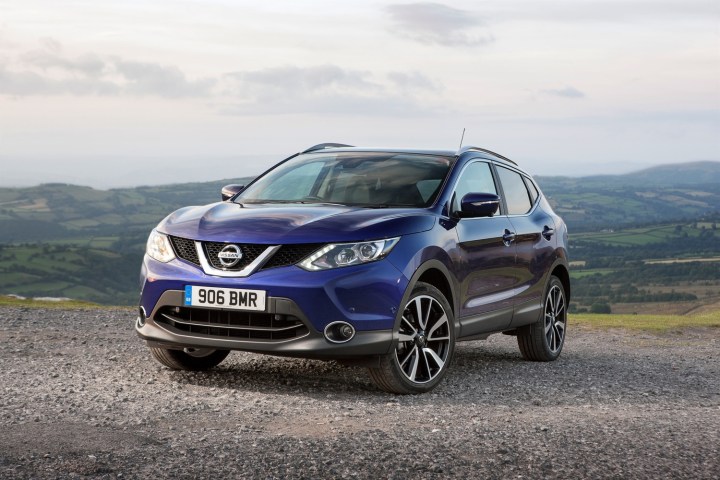
The Nissan Qashqai will make its U.S. debut at the 2017 Detroit Auto Show next week, reports The Truth About Cars. The Qashqai (it’s pronounced “Cash-kai”) first appeared in 2007, and is now Nissan’s bestselling European model. But can Nissan replicate that success on this side of the Atlantic?
The Qashqai reportedly won’t displace an existing model in Nissan’s U.S. lineup, so it will likely slot below the Rogue as a competitor to subcompact crossovers like the Honda HR-V, Mazda CX-3, and Chevrolet Trax, as well as the new Ford EcoSport and Toyota C-HR. Nissan helped create this segment with its Juke, but that model doesn’t offer the practicality of the newer competition, instead emphasizing funky styling.
Unlike the Juke, the Qashqai looks more like a conventional SUV. In fact, it looks a lot like the Nissan Rogue, but it is appreciably smaller. It’s about 10 inches shorter than the Rogue, although its wheelbase is only 2.3 inches shorter, making for efficient use of space. Anyone who sees the two cars side by side will know they are different, but in photos it’s harder to tell.
In Europe, the Qashqai is offered with a mix of gasoline and diesel four-cylinder engines, but expect only gasoline options and a continuously variable transmission for the U.S. Those items could be shared with other U.S.-spec Nissan models. The Qashqai is currently built at Nissan’s Sunderland, U.K., plant; it’s unclear if Nissan would import it or set up a U.S. production site as well.
If SUV popularity remains at its current heights, Nissan may need a second factory to keep up with demand. That is, unless the Qashqai doesn’t prove as popular with American buyers as it has with their European counterparts. We’ll have a better idea of Nissan’s plans when the 2017 Detroit Auto Show opens next week.
Editors' Recommendations
- VinFast is bringing a mini electric SUV to the U.S., and maybe a pickup, too
- Volkswagen is launching its own self-driving car testing program in the U.S.
- Jeep is launching its first two electric SUVs in the U.S. in 2024
- Gmail app hits 10 billion Play Store downloads, holds 53% of U.S. email market
- HMD Global shows its serious about U.S. expansion with 5 new Nokia phones


